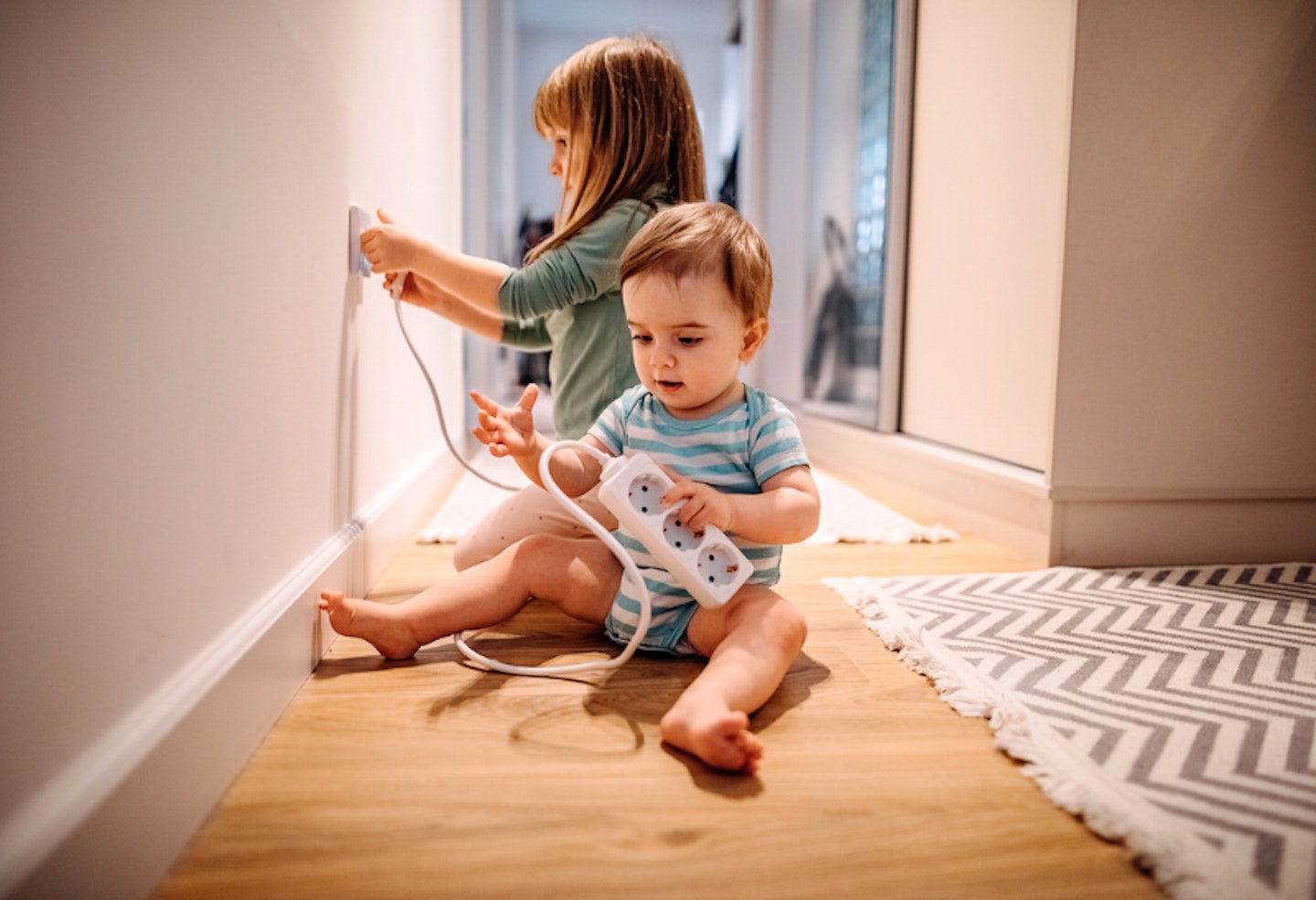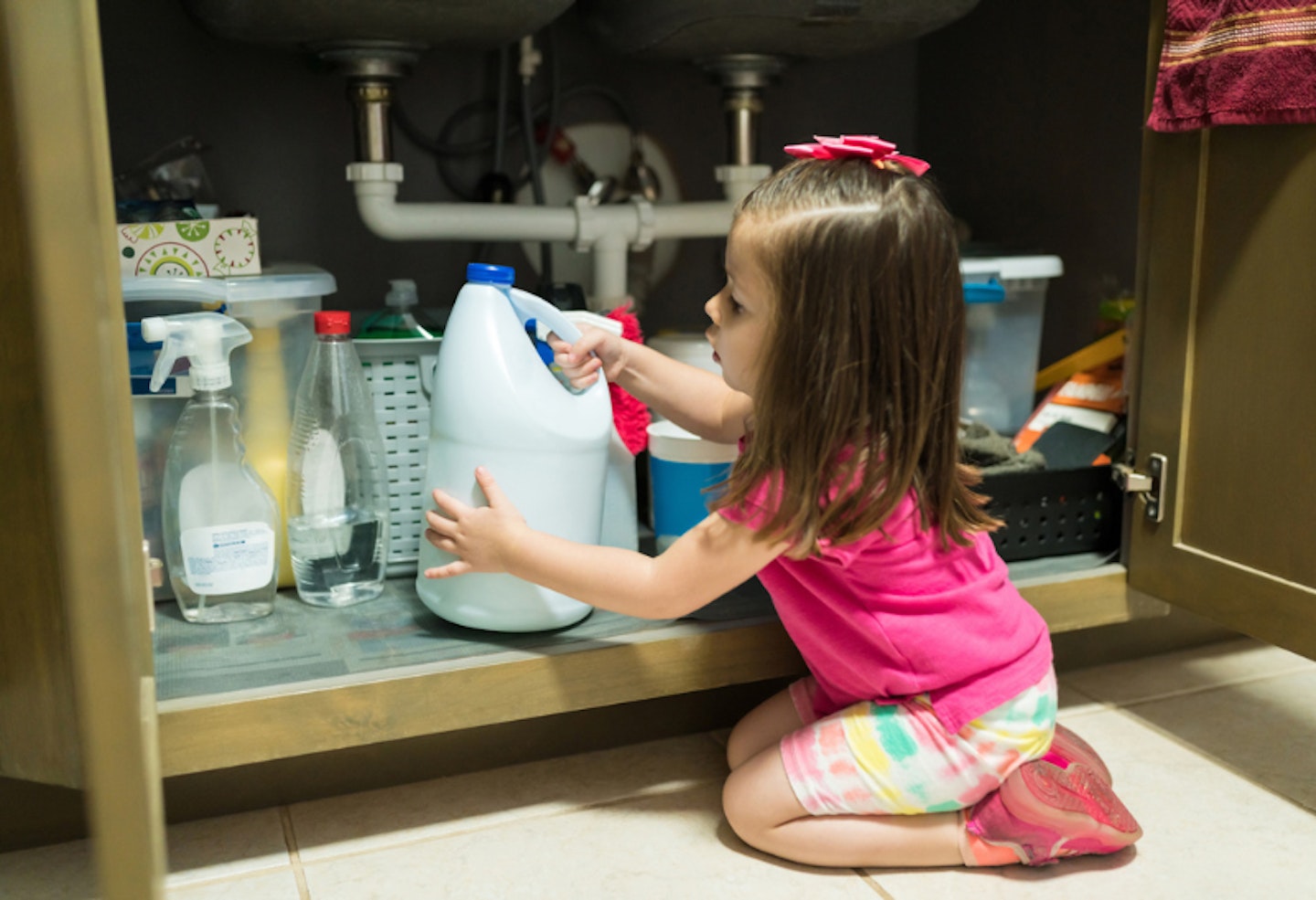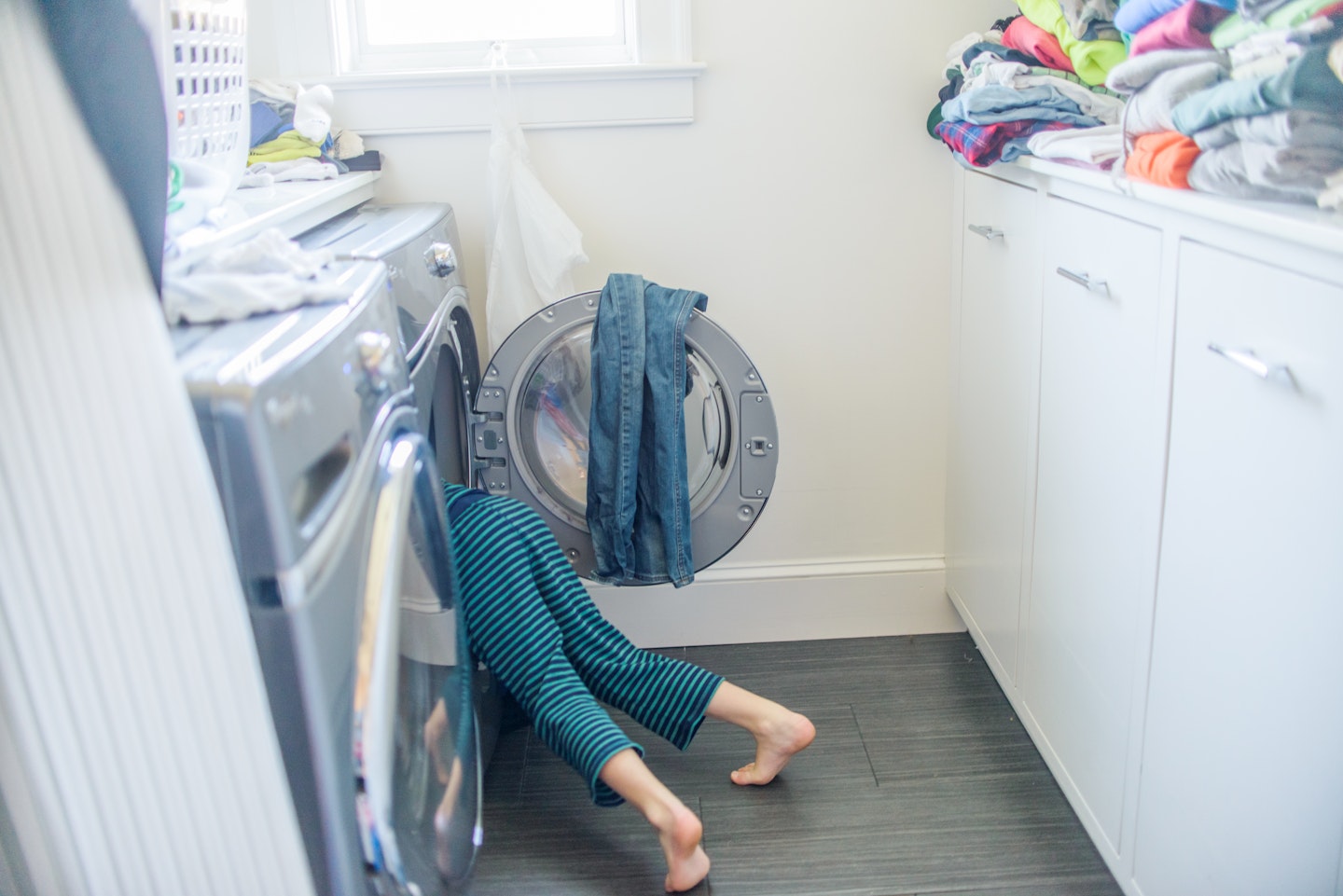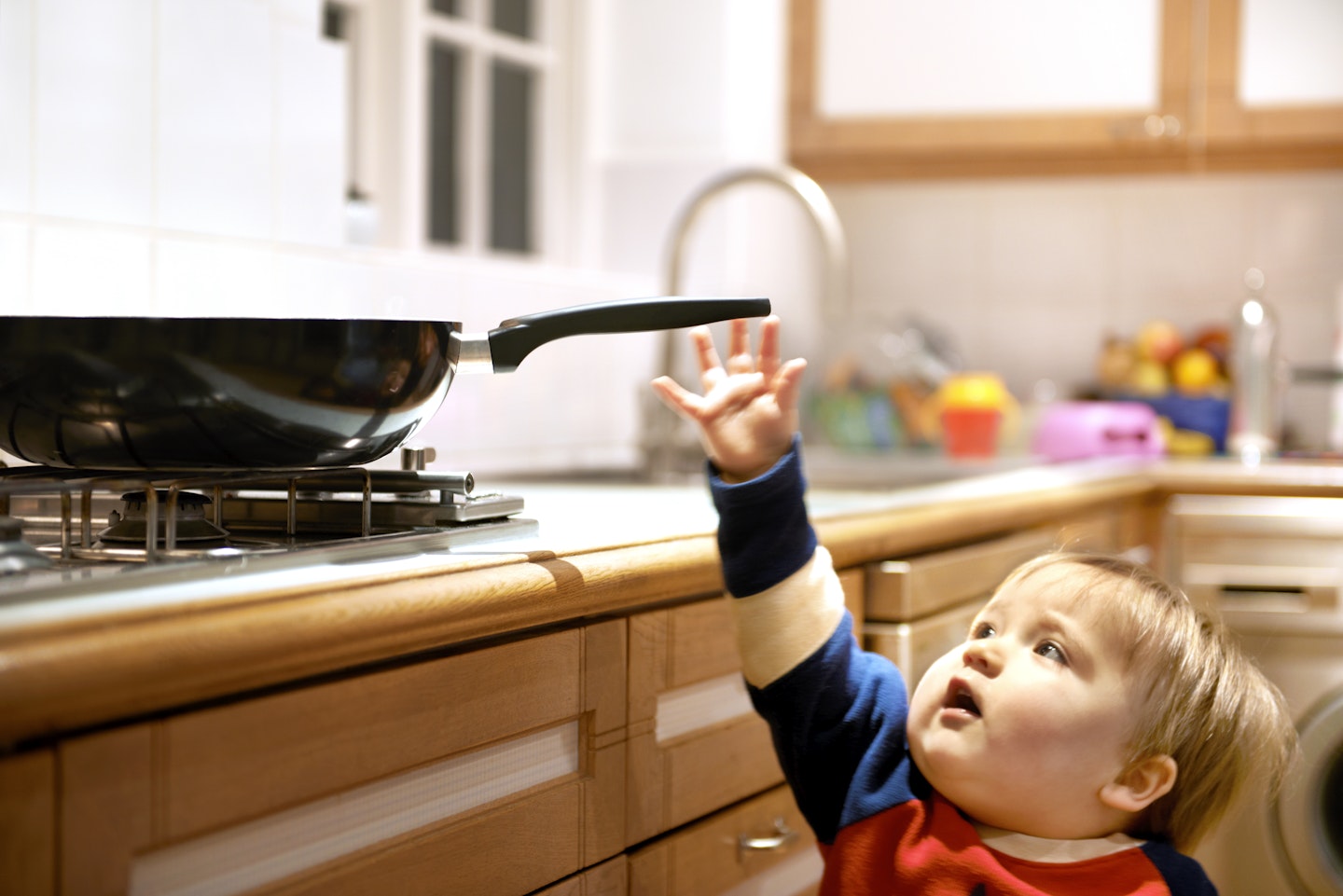When you bring your newborn baby home from hospital, you'll already have done your fair share of preparation, maybe including some baby proofing, but once your little one starts to crawl, that's when you'll really need to child proof your home to avoid any nasty bumps to your baby's head, or other accidents. It's surprising how many hazards there are in our homes. Don't worry though, we have lots of advice and tips to help you get ahead before your precious baby gets on the move, with a checklist going systematically through every room in the house - from the kitchen and bathroom to your baby's nursery.
What is baby proofing?
Baby proofing is making sure your house is safe for your little one. The NHSsays every year, thousands of under-fives are admitted to hospital following preventable accidents, and that is why it is important to baby-proof your home. It is a good idea to look at each room from your baby's perspective, thinking about what might spark interest, or if there is any furniture which might look good for pulling up on, or chemicals without safety lids, or which can be easily accessed in unlocked or low cupboards. The items and areas of your home which are harmless to you can suddenly become hazards to your little one.
Key baby proofing areas to think about are:
Baby stair gates - these don't have to be just for use on the stairs, they can act as barrier to dangerous rooms, or places where you don't want your little one to get to without you, for example the kitchen where there might be hot liquids or dangerous substances.
Heavy Furniture - Ensure any chests of drawers or furniture which could topple if pulled on by baby is secured to the walls.
Cables and wires: Are these out of reach? Cables and wires are particular appealing to babies who could get caught in them, or even chew them.
Soften sharp corners: There are lots of corner protectors which will make any little bumps your baby has less dangerous.
Household cleaning items and medicine: Ensure any hazardous items are kept in locked cupboards, or up high and that, where possible, they have safety lids.
When should you start baby proofing?
On average, babies and toddlers start to crawl between 6 and 10 months, so it's a good idea to begin the baby-proofing process at the first signs of crawling. However, we know how busy life can be with a young baby, and it is easy to forget and hard to find the time. Therefore, you could start during pregnancy to ensure your home is safe right from the start. Although baby proofing is an ongoing process, it is something you need to constantly reassess. As your little one grows, they will be able to reach new heights or show interest in different things. Also, as their hand-eye coordination improves, they will be better at undoing cupboards or bottles, so it is vital that you are always vigilant and also that you constantly look at each area of the house from your child's point of view.

General baby proofing tips
Technology and appliances
-
Hide any cords behind heavy pieces of furniture, like a bookshelf or sofa
-
Keep hot electrical appliances, like straighteners, toasters, kettles or coffee makers unplugged and out of reach
Windows, doors and stairs
-
Use window guards to prevent potentially dangerous falls if the baby opens the window.
-
Install stair gates at the bottom and top of the stairs
-
If you have balcony railings with gaps larger than 6.5cm, then block them off with plastic, bamboo fencing or other materials
-
Use doorstops to stop doors from slamming unexpectedly and catching little fingers. You can also get covers for the gap by the hinges, in case the little one puts their fingers in there.
Fireplaces
-
Install a fireguard for when your fire is burning, and make sure it doesn't heat up in case the baby touches it.
-
If you have a gas fireplace, make sure the baby can't access the controls
-
For real fires, store any logs, matches and fireplace tools out of reach

How to baby-proof each room
Kitchen
-
Keep any heavy pans or sharp kitchen knives or tools locked up or well out of reach. You can buy cupboard locks to stop baby opening cupboards. These are also a good idea to prevent your little one trapping their fingers in the cupboard.
-
Use rubbish bins with childproof lids, or keep them in an area your child can't access by using a stair gate.
-
Secure your fridge with an appliance latch.
-
Give up using tablecloths or placemats for a while. If your baby pulls on them, then everything on the cloth or mat will come down with it, right on top of your child.
-
A great way to distract your baby from other areas in the kitchen is to keep one cupboard unlocked and fill it with baby-safe items like Tupperware.
-
Cook on the back burners on the hob where possible
-
Keep glassware well out of reach, either up high or in a locked cupboard
-
Install covers on the knobs of your oven, or gas hob
-
Move the highchair away from the table and, when not in use, so your baby doesn't try to climb on it, or when your little one is in the highchair, don't leave them unattended because they can push against table legs and topple their high chair.
Living room
-
Anchor your TV to the wall if possible, and cover any sharp corners; also, hide any cables.
-
Move tall, wobbly lamps behind furniture
-
Move blinds with looped string blind cords and don't put furniture beside them. These can be attached to the wall too. Gov.uk advises that these are extremely dangerous and they must be out of reach of young children.
-
Attach corner and edge guards to the side and coffee tables so they don't bump into sharp edges.
-
Consider anchoring furniture such as bookcases or any pieces that can topple to the walls with anchor straps.
-
Check your houseplants to see if they're toxic to babies, and remove them if they are
-
Put non-slip grips under all rugs
Nursery
-
Position your baby's cot away from heaters, other furniture and windows
-
Put a thick rug below the changing table
-
Use rug grips to stop any slipping over
-
Put baby wipes and other baby supplies out of reach of your little one
-
Finish all painting and wallpapering at least eight weeks before your baby is due to avoid any harmful fumes
-
Check that the slats of the cot are no more than 6.3cm apart
-
Keep pillows, toys and comforters out of the crib when your baby is sleeping to ensure you follow safe sleep guidance
-
Secure storage dressers to the wall
-
Always keep the drop side of the cot locked if you're not in the room
-
Don't hang toys from the side of the cot
-
Remove any mobiles from your baby's reach
Car and garage
-
Install a rear-facing car seat in the back seat of your car. It is advised that babies rear their faces for as long as possible.
-
If you live somewhere sunny or it's the height of summer, use stick-on sun shades to block the rays on the back windows.
-
Clear the car of any small objects like pens or coins that could be choking hazards.
-
Store tools or toxic substances well out of reach in your garage
-
Keep the door locked or install a gate
-
Place detergent and laundry products in a locked cupboard

Bathroom
-
Install a temperature gauge on your hot water heater to a maximum of 120 degrees Fahrenheit.
-
Never leave your baby unsupervised in the bath
-
Use a non-slip mat
-
Install a soft cover for the bath spout and covers for the taps
-
You could also use a bath seat for your baby, but they must never be left unsupervised.
-
Install a toilet seat lock.
-
Ensure your family medicine cabinet is out of reach or locked to prevent your little one from taking anything they shouldn't.
Other areas or items to consider for baby proofing
Toys
-
Make sure toys are well-made and securely put together
-
Toys shouldn't have buttons, beads or anything your baby could pull off or choke on
-
They shouldn't have strings or cords longer than 30cm
-
They also shouldn't be too heavy
-
Be aware of button batteries. These are incredibly dangerous if swallowed and they can be appealing to inquisitive children. ROSPA (The Royal Society for the Prevention of Accidents) says that they can cause serious internal damage.
Preventing poisoning
-
Check your whole home and move any cleaning products, vitamins, medicines and toiletries well out of reach in locked cupboards.
-
Never store cleaning products in unmarked Tupperware or old food containers.
-
Make sure any handbags belonging to visitors that could contain makeup or medicines are put well out of reach.
Preventing burns
-
Don't carry hot food or drink and your baby at the same time
-
Don't hold your baby while you're cooking
-
Turn the pan handles towards the back of the stove when you are cooking
-
Curious kids love to open things, so fit an oven door guard
-
Turn off appliances when you're finished using them

Emergency planning
Even with all the precautions in the world, we know that, sadly, accidents do happen. Being prepared when they do will hopefully mean there will be a better outcome, and everyone, even if a little shaken, will be okay. Things to think about in your house in the event of an emergency, like a house fire or accident, include:
-
Install a carbon monoxide detector and check the batteries regularly
-
Install smoke detectors on every floor of your home, in hallways, and outside bedrooms, and check the batteries often
-
Add emergency contact information to your phone, where it can be accessed quickly or even in lock mode
-
Stock up on first aid equipment and store it in an easily accessible cupboard (with a childproof lock)
-
Make sure you have either an operating landline and/or a charged-up portable charger in case of power outages
-
Write down emergency contacts and keep them near your landline phone if you have one, or somewhere you can easily find them if you only have a mobile.
-
Make sure your house or flat number is easy to identify in case the emergency services need to access your home.
-
Plan a fire escape route
-
Know how to treat burns if they happen
How much does baby proofing cost?
Baby proofing doesn't need to be expensive. You will need to invest in some items, such as a stair gate, but you can purchase baby proofing kits which will include a lot of the things you need and can range in price from £5 to £30. There is also the option to pay a professional company to come in and baby proof your house.
How can I baby-proof my house fast?
Baby proofing is an ongoing process and will constantly evolve as your little one grows and is able to reach more things, or as they become more inquisitive; therefore, you will always be toddler-proofing, then child-proofing. However, there are some things you can do quickly if you suddenly realise your baby is on the move and you are not prepared. A baby proofing kit will give you corner protectors and cupboard locks, as well as door stoppers to ensure you cover the basics and it is also advisable to ensure you have stair gates at the top and bottom of the stairs and blocking access to any rooms you don't want your little one to get into. Also, ensure you have a fire alarm and carbon monoxide detector fitted, for everyone's safety.
How important is baby proofing?
We all know that toddlers get into mischief and inevitably accidents will happen at some point but baby proofing is vital to help prevent them and to ensure when they do happen that they are not bad, and don't have any devastating consequences. If you make sure you supervise your child and view your environment from their perspective you will be able to confidently baby proof your home.
Laura Healy is a Commercial Content Writer for Mother&Baby. She is a mum-of-two girls and loves writing about all things parenting, she is particularly interested in the toddler years and eco-friendly baby products, as well as children’s literature. She has a PhD in Creative Writing and has published short stories in the UK and Ireland, as well as previously writing freelance for her local paper.
